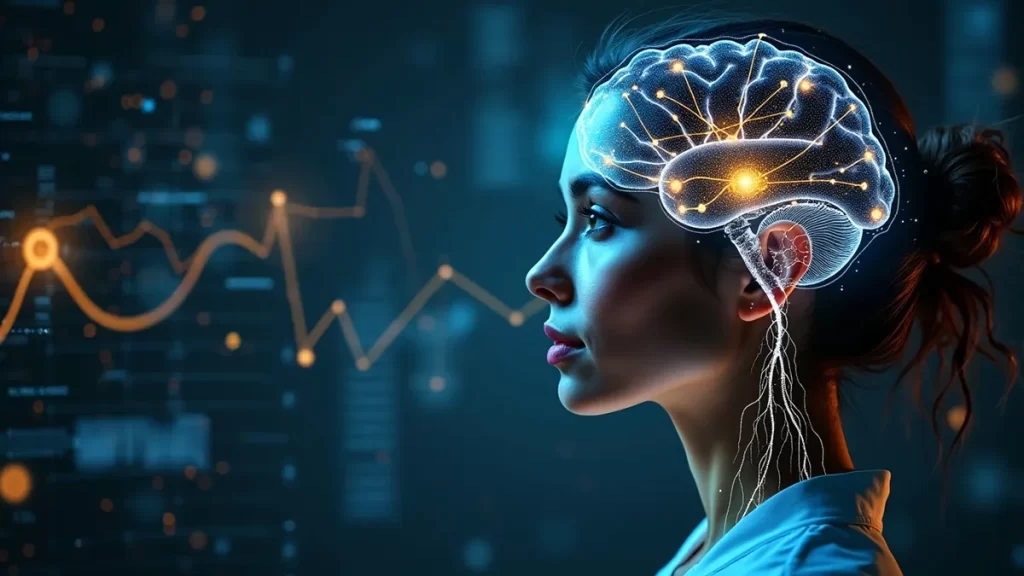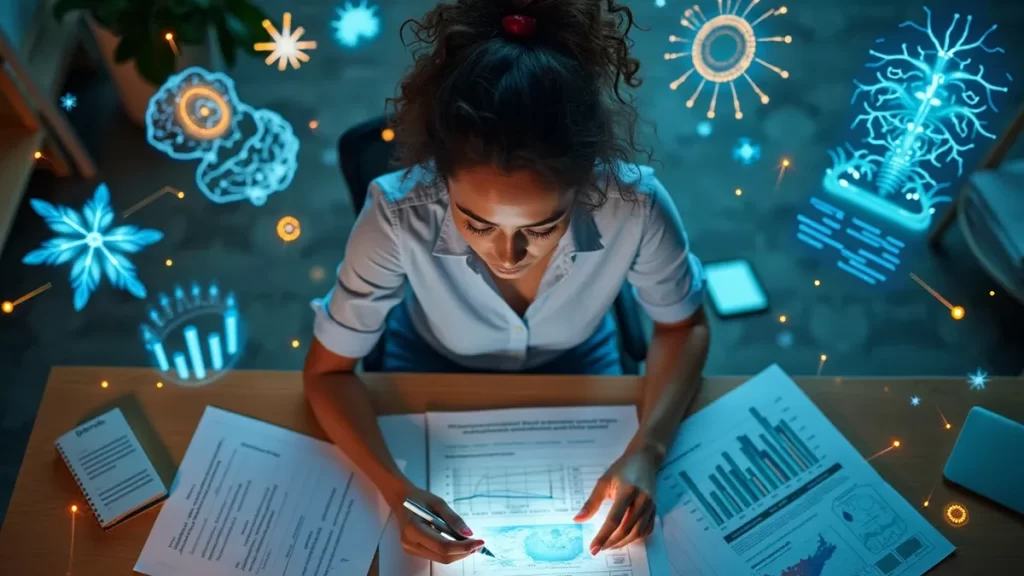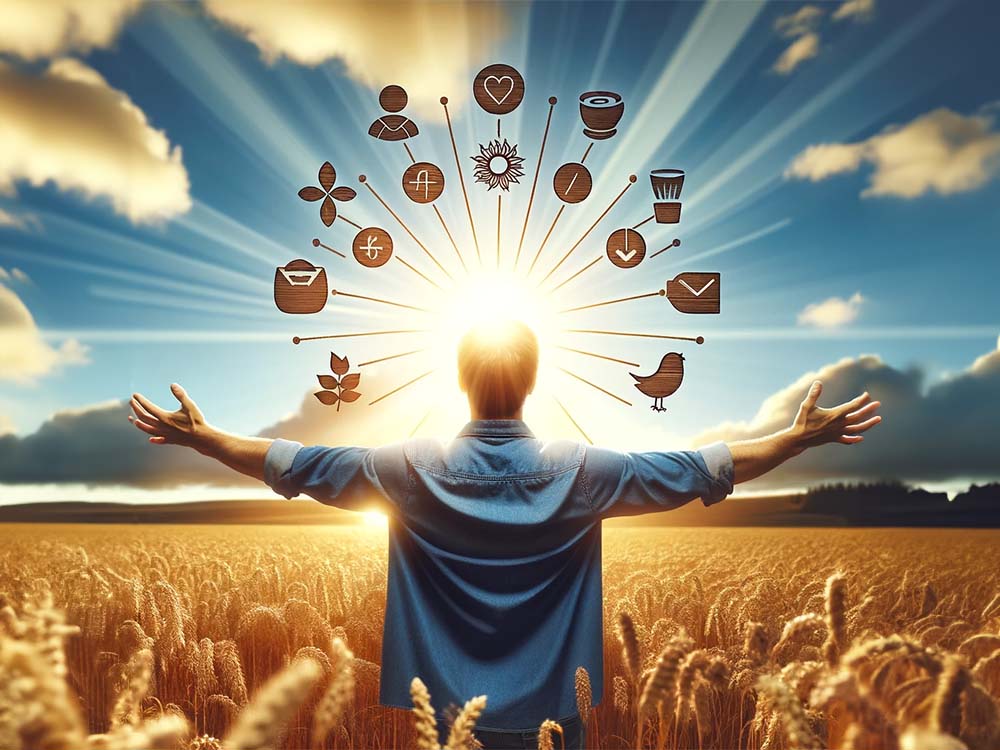The Future of Human-AI Symbiosis: Merging Minds and Machines
Have you ever imagined what it would be like if your brain could work hand-in-hand with a machine? It sounds like something out of a sci-fi movie, right?
But in reality, this future of human-AI symbiosis isn’t too far off. In fact, it’s already happening, and both humans and AI are learning from each other in ways that might change how we think forever.
Cognitive Coevolution: Growing Together
Think of this cognitive coevolution as two dancers, both leading and following. Humans are learning from AI just as much as AI is learning from us. It’s like a feedback loop, constantly evolving and growing stronger.
Mutual Learning: A Two-Way Street
Humans and AI don’t just coexist—they learn together. You’ve probably already interacted with AI in simple ways, like using voice assistants or smart devices.
But imagine taking that to the next level. While AI systems pick up on your habits and patterns, you might find yourself adapting how you interact with them.
Instead of speaking to a machine like you would to another person, you may start talking in short, clear commands because you know it understands better that way.
This mutual learning is at the heart of how humans and AI are growing together.
“AI systems learn from how we speak, how we solve problems, and even how we react emotionally. In return, we begin to shape our behavior to align with how these systems process information.”
Cognitive Niche Construction: Shaping Our Thinking Environment
Now, picture this: AI isn’t just learning from us—it’s creating new environments for us to think and solve problems.
Just like animals shape their habitats to suit their needs, humans adapt their thinking to the new cognitive environments AI provides.
These tools, like virtual assistants or AI-driven platforms, create shortcuts for our thinking. They help us solve problems faster, but they also reshape how we approach challenges.
Emergent Hybrid Cognitive Styles: A New Way to Think
As we work more with AI, a new way of thinking is emerging. It’s not purely human, nor is it purely artificial. Instead, it’s a blend of both. You might notice this in how AI helps you organize your thoughts, structure tasks, or even solve complex problems.
Over time, this fusion could lead to hybrid cognitive styles—a unique combination of human intuition and machine precision.
“Imagine a future where the way we solve problems is no longer solely based on human creativity or AI logic but a seamless blend of both. That’s what makes this coevolution so exciting.”
Cognitive Diversity in a Human-AI Ecosystem: Strength in Differences
One of the coolest things about this human-AI ecosystem is how it fosters cognitive diversity. Different humans have different strengths, and so do AI systems.
Together, this creates a diverse ecosystem of problem-solving approaches. Some people might rely more on their intuitive thinking, while others lean on AI to handle logical tasks.
This combination opens the door to unique problem-solving methods that neither humans nor AI could achieve alone.
The Role of Culture in Human-AI Coevolution
Culture plays a huge role in how this cognitive coevolution happens. The way people from different countries or backgrounds use AI can shape how AI develops, and in turn, AI influences human culture.
In some places, AI might push people toward a more data-driven approach to decision-making. In others, it might enhance creativity or interpersonal connections.
Potential Cognitive Speciation: A New Kind of Brain?
Here’s a wild idea: as AI becomes more integrated into our lives, different groups of people and AIs might evolve together in unique ways.
Over time, this could lead to cognitive speciation—like having different “species” of minds, each with its own strengths, shaped by their unique interactions with AI.
“Could we see the rise of new types of intelligence, where different human-AI communities develop their own ways of thinking? It’s not as far-fetched as it sounds.”
Ethical Implications: Keeping Our Values Intact
Of course, all of this raises some big ethical questions. How do we make sure that human agency and values are preserved in this coevolving world? As AI gets smarter and more integrated into our thinking processes, we’ll need to find ways to maintain our sense of control and ensure that our values aren’t lost along the way.
Long-Term Trajectories: Where Are We Headed?
The future of human-AI symbiosis is still being written. Over centuries or even millennia, humans and AI could continue to shape each other in ways we can’t yet imagine.
This journey isn’t just about getting AI to do what we want. It’s about growing together, evolving together, and building a future where human minds and machine intelligence merge to create something entirely new.
Conclusion: A Partnership for the Future
The future of human-AI symbiosis isn’t about replacing humans with machines. It’s about creating a partnership where both learn, adapt, and evolve together.
As we move forward, this relationship will only deepen, leading to new forms of intelligence, creativity, and problem-solving that we’ve never seen before.
Are you ready to be part of this journey? Share your thoughts and ideas on how you see this cognitive coevolution shaping the world. Let’s explore the future together!

-

 Best Picks10 months ago
Best Picks10 months agoDriving Insurance: Get the Best Car Coverage Without Overpaying
-

 Best Rewards3 months ago
Best Rewards3 months agoBest rewards credit cards in 2025 for everyday use
-

 Personal Growth & Mindset1 year ago
Personal Growth & Mindset1 year agoTed Lasso Effect: 5 Goal-Setting Secrets You Must Know
-

 Career & Success1 year ago
Career & Success1 year ago30 Key Strategies for Growth: Mindset, Productivity & Wellness
-

 Personal Growth & Mindset1 year ago
Personal Growth & Mindset1 year agoMachado de Assis: This Viral TikTok Explains Why You Need to Read ‘The Posthumous Memoirs of Brás Cubas’ Now
-

 Career & Success12 months ago
Career & Success12 months agoChallenges of Not Having Goals: 5 tips to help you get started








